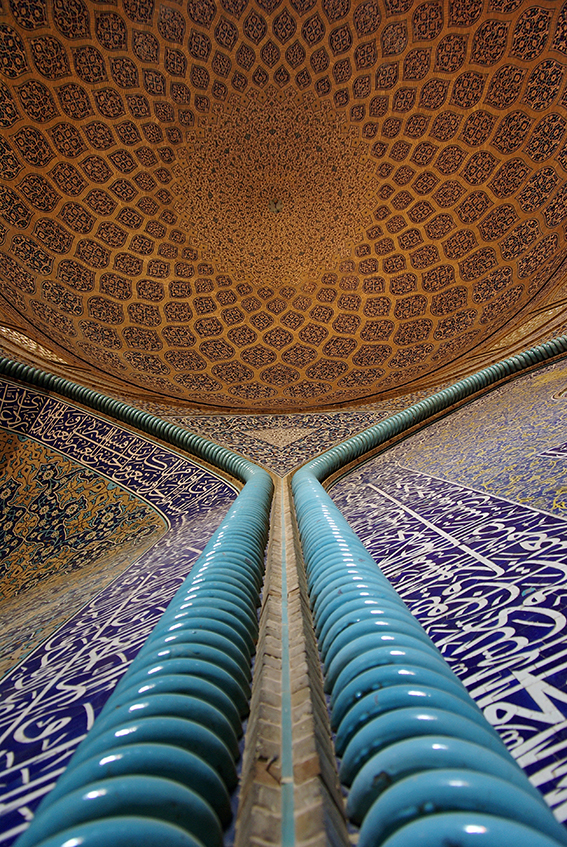Shah Abbas, who ruled from 1586 to 1629, is generally considered the greatest ruler of the Safavid dynasty. He moved his kingdom’s capital from Qazvin to Isfahan, making the city the pinnacle of Safavid architecture.
Shah Abbas expanded and beautified the old city of Isfahan for his capital. Building on earlier Persian designs that included tiled ‘onion’ domes and iwans (great porches or portals), Shah Abbas’ architects built a city of multicolored monuments such as Masjid-Imam and the public square Naqsh-Jahan. And standing on the eastern side of Naqsh-Jahan Square, one of the architectural masterpieces of Safavid era: Masjid Sheikh Lotfollah, designed by chief architect know to his contemporary colleagues as Master Hossein.
According to an article by Mohammad-Baqer Khosravi, published by Iran Art News, the construction of Masjid Sheikh Lotfollah started in 1603, after Shah Abbas was told that the Shiite scholar Sheikh Lotfollah took refuge in Iran from Jabal Amel, a mountainous region of Southern Lebanon.
Shah Abbas invited Sheikh Lotfollah to Isfahan, and asked his architects, who had recently constructed the Naqsh-Jahan Square, to design and build a school and a place of worship befitting his honorable guest from Lebanon.
The architects presented their proposals, among which a queer design caught Shah Abbas’ attention. It was a work by an old man called Master Hossein. His was a little mosque with neither a courtyard nor a minaret.
The design was argued against by architects from the technical question of solidity; “with no minarets flanking the archway, nothing will hold the arch in place. Even in Yazd Jame Mosque, there are additional reinforcements at the back of the minarets.”
But the old master had already come up with a solution; the archway, designed at a moderate height, would be backed by the walls surrounding the square. Now when the visitors pass under the entrance, they enter an L-shaped yard before they reach a soaring dome.
Master Hossein had included the L-shaped yard in his plan to align the mosque with the qibla, the direction of Ka’ba in Mecca. With the L-shaped yard included, the outer archway of the mosque faces the palace of Ali-Qapu westward, while the inner doors open south to let the visitors under the dome, as prescribed by traditional Islamic architecture.
The master was diligent in every detail. The inscriptions were lavished with elaborate calligraphy of Qur’anic verses after the letterings of the renowned calligrapher Reza Tabrizi who changed his name to Reza Abbasi when he left Tabriz for Safavid court in Isfahan.
As opposed to the grandeur of the nearby Masjid-Imam, one can see a more delicate touch in the tiles and decoration. Every tile of the mosque was laid with precision. The yellow-dominated ceiling makes a stark contrast with the blue mihrab. One can go on staring at the ceiling for an hour or two without getting tired.
After the death of Sheikh Lotfollah, his namesake mosque became a private, luxurious place of prayer and worship for Shah Abbas I and the ladies of the royal family.
As intended in the master’s plan, across from Masjid Sheikh Lotfollah stands the palace of Ali-Qapu, the ceremonial palace of Shah Abbas. There are legends and rumors about how the two buildings were interconnected by an underground passage which was later sealed.
They say Shah Abbas commissioned the underground passage between the palace and the mosque. This allowed the women of his harem to secretly make their passage to the mosque without being seen by the people on the square.


